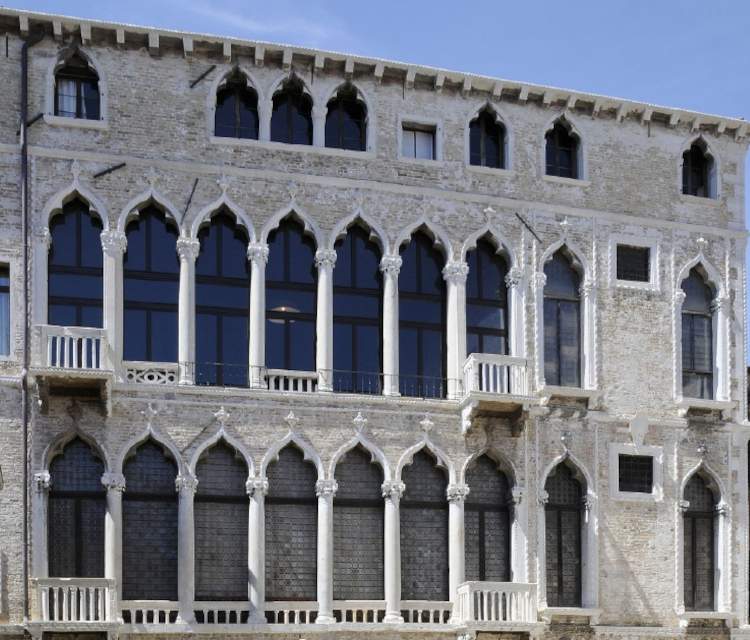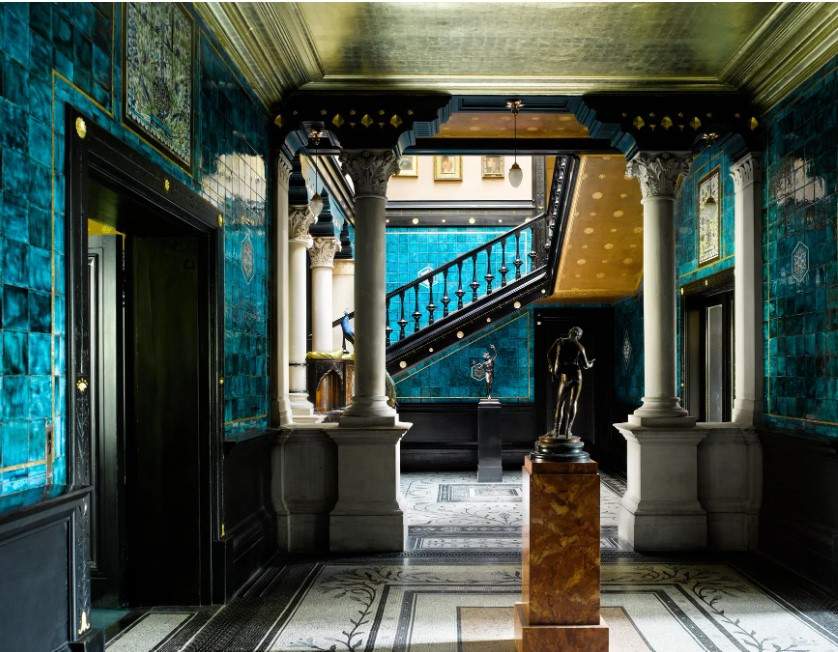The 2022 coming to a close has been another year of major reopenings, renovations, and refurbishments. We have collected a selection of the top 10 reopenings of this year. Here are what we think they were.
As of January 6, 2022, the Roman House in the basement of the Giovanni Barracco Museum of Ancient Sculpture in Rome reopened after more than two decades of closure. The domus dates in its main structures to the fourth century AD; its discovery was accidental and occurred in 1899 during the partial demolition works of the Renaissance building that has housed the Museum since 1948, carried out during the opening of the new Corso Vittorio Emanuele street axis. It had not been accessible to the public since 2000: the reopening of the Domus, linked to the trial, was only temporary but was the first step in a larger and more complex project to enhance the site. Read the full story here.

As of March 5, Palazzo Pesaro degli Orfei in Venice, the Gothic Venetian palace that was the home and workshop of Mariano Fortuny y Madrazo and his wife, muse and companion Henriette Nigrin, and for this reason also known as “Palazzo Fortuny,” reopened to the public. The artist’s home-atelier, a landmark in the early 20th century of Europe’s intellectual elite and a center of production in cosmopolitan Venice, has also become a permanent museum. The building has reopened its doors to the public after the necessary conservation work on the ground floor, which was heavily damaged by the Acqua Granda in November 2019, and the overall refurbishment of the noble floors. The layout was designed by Pier Luigi Pizzi with Gabriella Belli and Chiara Squarcina, with the intention of evoking the atmosphere of one of the most iconic places in the lagoon city. Read the full story here.

In April, the Ancient Theater of the Herculaneum Archaeological Park reopened to the public: visitors can now return to the journey into the bowels of the earth and the history of the ancient city, almost turning into... explorers with helmets, capes and flashlights, to explore the history of Herculaneum. In fact, the Ancient Theater was buried by the eruption of 79 AD and is still buried under the eruptive material, encased in a tufa bank. It was excavated in the eighteenth century through a series of tunnels, the ones you walk through today during your visit. Read the full story here.

It reopened to the public from Monday, May 23, 2022, with a new tour route, the apartment of the Duke of Chiablese, commissioned by Charles Emmanuel III for his son Benedetto Maurizio and entrusted to the mastery of court architect Benedetto Alfieri. The apartment has been the subject of a lengthy restoration project promoted by the Soprintendenza Archeologia, Belle Arti e Paesaggio for the Metropolitan City of Turin and carried out by the Centro Conservazione e Restauro “La Venaria Reale”: the conservative interventions started in 2016 thanks to the support of the Consulta per la valorizzazione dei beni artistici e culturali di Torino with the restoration of the Gabinetto degli Specchi and the Gabinetto doppio. Read the full story here.

In Genoa after three years, June 7 saw the reopening of Palazzo Rosso, the large museum belonging to the Strada Nuova Museums complex along with Palazzo Bianco and Palazzo Tursi, which is housed in the 17th-century residence of the Brignole-Sale family. Alongside the plant and technological interventions, two very important conservation operations were carried out: the Grotto Room on the second mezzanine floor with its “alcove,” an extraordinary private room that is unique among the interiors of Genoese palaces and is being opened to the public for the first time, was restored. Also restored is the vault of the Spring Room frescoed by Gregorio De Ferrari, an authentic masterpiece of the great Genoese Baroque decoration. Read the full story here.

As of July 1, 2022, the Hypogeum of the Cristallini, the most famous of the Hellenistic hypogea, has reopened to the public in Naples, in the heart of the Rione Sanità. It is an ancient Greek burial ground that leads anyone who visits it back in time 2300 years ago. Accessible by a small staircase inside a building on Via dei Cristallini, the Hypogeum’s four spaces will lead visitors to a place rich in decoration and exquisite trompe l’oeil effects. The complex is in fact made up of four sepulchres, carved out of the tufa, each with an independent entrance. Each is then made up of two overlapping chambers: the vestibule was used to fulfill the funeral rites, and from here there was access via a staircase to the lower floor, that is, the tomb intended to house the bodies of the deceased. Read the full story here.

Reopening last July 1, after a year of work, and with new layouts and spaces, for the National Gallery of Umbria in Perugia, one of Italy’s most important museums. The new itinerary has been designed under the banner of tradition and innovation: the National Gallery of Umbria is rethinking itself with a light, modern, cutting-edge, cue-rich layout, with a renewed arrangement of the works, interesting multimedia apparatus, interdisciplinary and research-oriented approach. The interventions, costing 5 million euros, bear the signature of architects Daria Ripa di Meana and Bruno Salvatici and were financed by the Development and Cohesion Fund. Read the full story here and Read Marco Pierini’s interview about the new arrangements here.

In Antwerp, the Royal Museum of Fine Arts (KMSKA - Koninklijk Museum voor Schone Kunsten Antwerpen), one of the most important museums in Flanders and Belgium as a whole, reopened on September 24 after eleven years of restoration and renovation. A major building, a world-class collection, dynamic displays, and bold programming-these are the ingredients of the new museum. The work, which also created 40 percent additional space, was designed by KAAN Architecten, who wanted to create two worlds in one building, with work that earned the new museum several awards even in its closed period. Read the full story here and Read Francesca Gigli’s in-depth article here.

In London’s Kensington neighborhood, Leighton House reopened to the public in October after a £9 million restoration and in conjunction with its sister museum Sambourne House originally owned by illustrator Edward Linley Sambourne. Lord Frederic Leighton, among the most distinguished exponents of Victorian art and a prominent multifaceted artist close to the Pre-Raphaelites, once lived here. Designed by architect George Aitchison in 1864, Leighton House was where the most celebrated Pre-Raphaelites, from John Everett Millais to Edward Burne-Jones to Alma-Tadema, gathered. Read the full story here.

After more than twenty-five years, the Museum of Armenian Art and Culture reopens in Jerusalem: closed in the mid-1990s due to deteriorating facilities, restoration has been underway since 2018, and now as of mid-November it will once again be open to the public. The opening of the new Edward and Helen Mardigian Museum took place on October 23, with a ceremony presided over by Armenian Patriarch of Jerusalem Nourhan Manougian. The museum traces 3,000 years of Armenian art and culture. Read the full story here.

 |
| The most important museum reopenings of 2022 |
Warning: the translation into English of the original Italian article was created using automatic tools. We undertake to review all articles, but we do not guarantee the total absence of inaccuracies in the translation due to the program. You can find the original by clicking on the ITA button. If you find any mistake,please contact us.